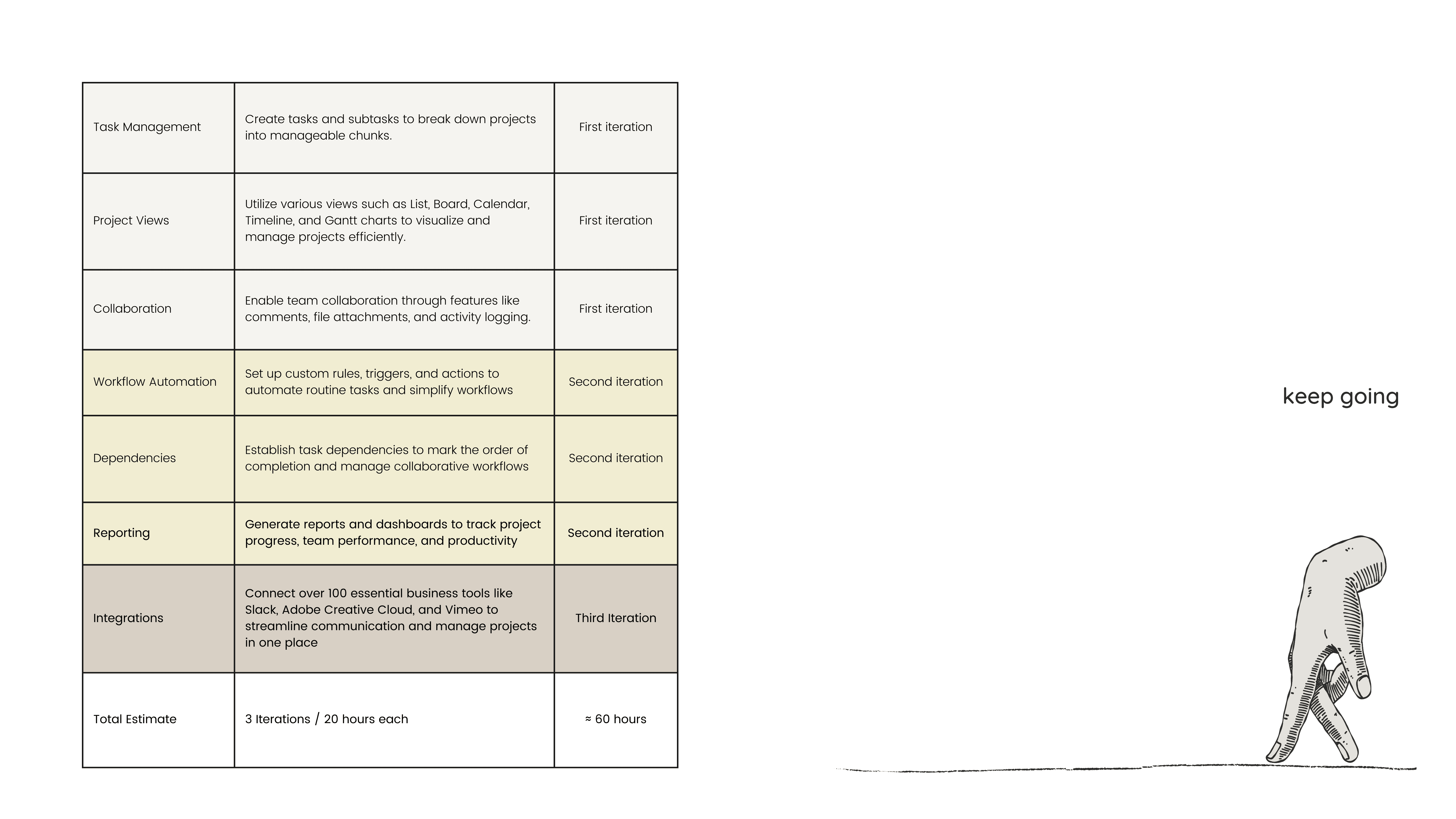When to buy / and when to build: let's look at the example of Asana
When considering the effectiveness of using Asana versus building a custom solution with low-code tools like Bubble, it’s essential to evaluate both the costs and the benefits tailored to your business needs
DAte
Aug 26, 2024
Category
How to?
Reading Time
Plans comparison
***
Asana: 10 users for 24 months
Premium Plan: $10.99 one month * 10 users * 24 months = $2637.60
Business Plan: $24.99 one month * 10 users * 24 months = $5997.60
***
Bubble Custom SaaS: unlimited users for 24 months
Monthly Platform Cost: $36
Dev. time: 3-4 iterations/weeks
One dev. iteration: ≈ $1000+
Unlimited Users and API integrations
Total Cost for 24 Months (Bubble): $36 * 24 months = $864
Benefits of Building with Bubble
Customization:
With Bubble, you can tailor the application specifically to your business needs, adding features that are crucial for your operations while removing unnecessary ones. This level of customization is not possible with off-the-shelf solutions like Asana.
Rapid Development:
The development process takes only 2-4 weeks, allowing you to quickly adapt to changing business requirements and market conditions. This speed is particularly beneficial for startups that need to iterate rapidly.
Scalability:
Bubble’s architecture allows your application to grow with your business. You can easily add new features and functionalities as your needs evolve, ensuring that your tool remains relevant.
Cost Efficiency:
Over time, building your own tool can be more cost-effective. While Asana charges per user, a custom solution on Bubble allows you to add as many users as needed without incurring additional costs.
Ownership and Control:
By developing your own solution, you retain full control over your data and application. This is especially important for businesses that require secure data handling and compliance with regulations.
Integration Capabilities:
Bubble allows for easy integration with other tools and APIs, enabling you to create a comprehensive ecosystem tailored to your specific business processes.
Potential for Revenue:
If your custom tool proves successful, you can potentially offer it as a SaaS product to partners and clients, creating an additional revenue stream.
Conclusion
While Asana offers a robust project management solution with a variety of features, the long-term benefits of building a custom application using low-code tools like Bubble can be significant. From cost savings and customization to scalability and ownership, a tailored solution can better meet the unique needs of your business, especially if you rely on project management tools daily. Transitioning to a low-code platform not only empowers your team to create the tools they need but also positions your business for growth and adaptability in a competitive landscape.
Author
Elena N.
Elena is a seasoned low-code CTO at Invental with over 6 years of development experience. Leveraging expertise in innovative technologies and low-code platforms, the author has consistently delivered impactful and efficient solutions, driving digital transformation and enhancing business operations.
Follow



